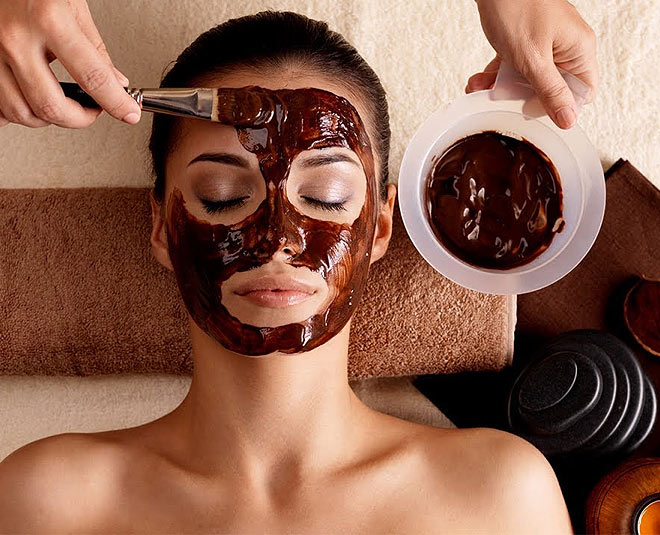When you think of chocolate, you probably imagine a decadent, comforting treat. But what if that same indulgence could give you radiant skin and shiny hair? It turns out, the main ingredient in chocolate—cocoa—is packed with powerful antioxidants and nutrients. A DIY chocolate face mask is an easy, affordable, and luxurious way to harness these benefits right from your kitchen.
This guide will explore the top chocolate face mask benefits, show you exactly how to make a chocolate face mask with simple ingredients, and even share a recipe for a nourishing chocolate hair mask.
Table of Contents
The Surprising Benefits of a Cocoa Powder Face Mask
The secret to this beauty treatment isn’t a melted chocolate bar; it’s pure, unsweetened cocoa powder. A high-quality cocoa powder face mask can work wonders for your complexion.
- Rich in Antioxidants: Cocoa is loaded with flavonoids, powerful antioxidants that help protect your skin from damage caused by free radicals and environmental pollutants, which can lead to premature aging.
- Boosts Hydration: The natural fats in cocoa help moisturize and soften the skin, leaving it feeling supple and smooth.
- Soothes Redness and Irritation: Cocoa has anti-inflammatory properties that can help calm redness and soothe irritated skin, making it suitable for sensitive skin types.
- Improves Skin Tone and Texture: The mask provides gentle exfoliation, helping to slough away dead skin cells and reveal a brighter, more even-toned complexion underneath.
- Enhances Circulation: The stimulants in cocoa, like theobromine, can increase blood flow to the skin’s surface, promoting a healthy, natural glow.
How to Make a Chocolate Face Mask: 3 Simple Recipes
Ready to get started? Always begin with a clean, dry face and remember to use 100% unsweetened cocoa or cacao powder for the best results.
1. The Basic Hydrating Mask
Perfect for normal to dry skin.
- Ingredients:
- 1 tablespoon of cocoa powder
- 2 tablespoons of plain yogurt (or milk)
- 1 teaspoon of honey
- Instructions:
- Mix all ingredients in a small bowl until you have a smooth, consistent paste.
- Apply an even layer to your face, avoiding the eye and mouth area.
- Leave on for 15-20 minutes.
- Rinse off with lukewarm water and pat your skin dry.
2. The Deep-Cleansing Mask
Ideal for oily or acne-prone skin.
- Ingredients:
- 1 tablespoon of cocoa powder
- 1 tablespoon of bentonite clay or fuller’s earth (multani mitti)
- 2-3 tablespoons of water or rose water to form a paste
- Instructions:
- Combine the cocoa powder and clay in a bowl.
- Slowly add water, mixing continuously until you achieve a smooth, spreadable consistency.
- Apply to your face and let it dry for about 10-15 minutes.
- Gently wash it off with warm water.
3. The Gentle Soothing Mask
Best for sensitive skin.
- Ingredients:
- 1 tablespoon of cocoa powder
- 1 tablespoon of finely ground oatmeal
- 2-3 tablespoons of milk or almond milk
- Instructions:
- Stir the cocoa powder and oatmeal together.
- Add the milk and mix well to create a creamy paste.
- Apply to your face, leave on for 15 minutes, and rinse gently.
Don’t Forget Your Hair! The Ultimate Chocolate Hair Mask
The benefits of cocoa aren’t just for your skin. A chocolate hair mask can restore moisture, boost shine, and make your hair feel incredibly soft.
- Ingredients:
- 2 tablespoons of cocoa powder
- 1 ripe banana, mashed
- 2 tablespoons of plain yogurt
- 1 teaspoon of honey
- Instructions:
- Blend all ingredients until completely smooth to avoid lumps.
- Apply the mask to damp hair, focusing on the lengths and ends.
- Cover your hair with a shower cap and let it sit for 20-30 minutes.
- Rinse thoroughly with water, then shampoo and condition as usual.
When to Seek Professional Help
While DIY masks are generally safe, it’s important to listen to your skin.
- Always perform a patch test on a small area of your skin (like your inner arm) before applying any new mask to your face to check for allergic reactions.
- Discontinue use immediately if you experience any severe redness, itching, burning, or swelling.
If you have persistent skin issues like severe acne, rosacea, or eczema, it is always best to consult a dermatologist before trying new at-home treatments.
Disclaimer: The information provided in this article is for informational purposes only and is not intended to be a substitute for professional medical advice, diagnosis, or treatment. Always seek the advice of your physician or other qualified health provider with any questions you may have regarding a medical condition.
Published on September 15, 2019 and Last Updated on October 20, 2025 by: Priyank Pandey
Get real time update about this post category directly on your device, subscribe now.


